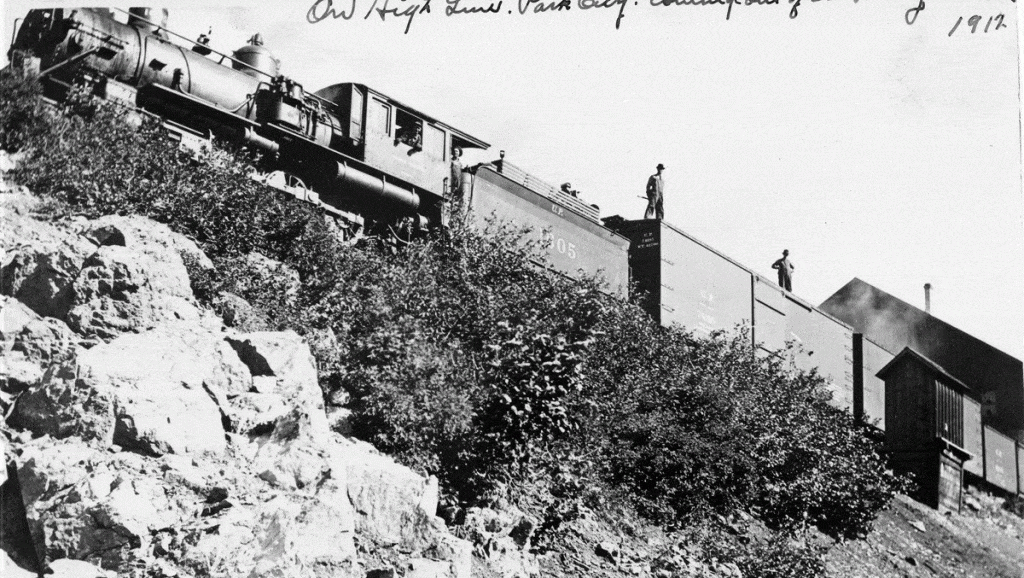Park City was a mining town for over 100 years. The industry and town flourished together with the advent of reliable, cost-effective transportation. This transformation commenced upon completion of the Pacific Railroad – the first transcontinental rail line which passed through Echo UT in 1869, 27 miles east of the nascent mining community.
Direct connection to the growing national rail network occurred in 1880, first by the Union Pacific Railroad followed by the Salt Lake and Eastern Railroad in 1899 (acquired by the Denver Rio Grande and Western Railroad in 1890). The two railroads functioned as giant conveyor belts, transporting essential materials in and out of Park City, including human capital.
The impact on the town and the industry proved significant. Census data reveals that from 1870 to 1900 the town’s population increased by 3000%. Similarly, Park City established a global reputation as one of the world’s premier mining communities both in productivity and technology. As the town and industry boomed the UP and DRGW responded accordingly, constructing seventeen different spur lines serving the mines and local industries upon which they depended.
Arguably the most famous of those spurs was the High Line – built in 1889 to serve the massive Ontario Mill. Constructed in 1877, the mill was considered one of the most modern and largest in the world. Its three brick chimneys were visible from present-day Kimball Junction. The facility operated 24/7, 365. Though the mill closed and demolished in 1924, the location was repurposed for construction of the Judge Loading Station in 1925. The loading station operated until 1960.

Credit: Park City Historical Society and Museum, Himes-Buck Digital Collection
The picture above helps convey the height of the line from street level. We see a UP train delivering supplies to the Ontario Mill complex circa 1912. The tracks wrapped around Rossi Hill and connected to the Deer Valley rail infrastructure via a switch near today’s Deer Valley Plaza. Conquering the steep grade of Rossi Hill represented a daily struggle for man and machine. The resulting cacophony of sounds from this spectacle reminded some Parkites of thunder.
From the vantage of his grandparents’ front porch located at 335 Woodside Ave, five-year-old Steve Leatham enjoyed a clear line of sight looking east towards Rossie Hill and the High Line. The “thunder across the canyon,” both sight and sound, produced an indelible memory.
UP abandoned the spur in 1961 and the rails were removed in the early 1970s. Part of the existing Rossie Hill Drive rests on the former roadbed. While the tracks and industrial complex that they once served are long gone, “shadows” remain: Take a stroll on Woodside Avenue, stop at address 335 and look east towards Rossie Hill. Focus on Rossie Hill Drive – envision a locomotive muscling its cars into either the former Ontario Mill or Judge Loading Station. Close your eyes and open your imagination. It’s 1954… Thunder across the canyon. Can you hear it? Can you feel it?
The Park City Museum will host a lecture on the High Line, given by David Nicholas and Steve Leatham, on Tuesday, June 30 from 5-6 p.m. In-person attendance will be limited to 20 people. Make a reservation with Diane Knispel at education@parkcityhistory.org. The lecture will also be recorded for virtual viewing. Find the virtual lecture at parkcityhistory.org.